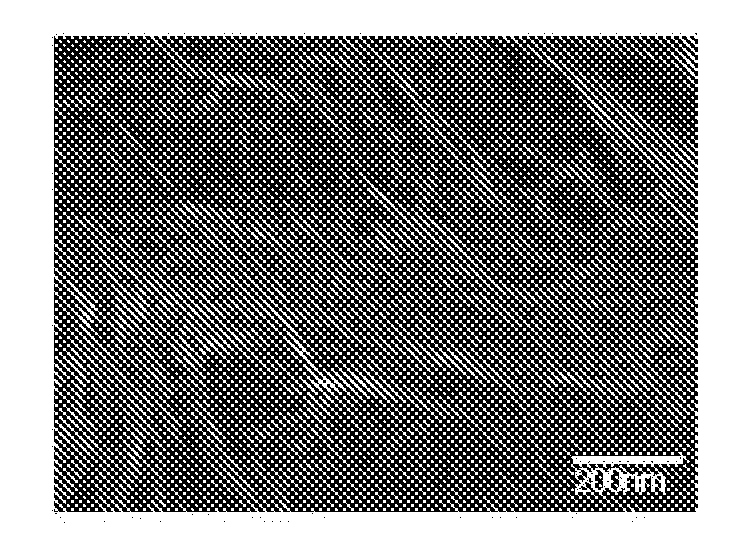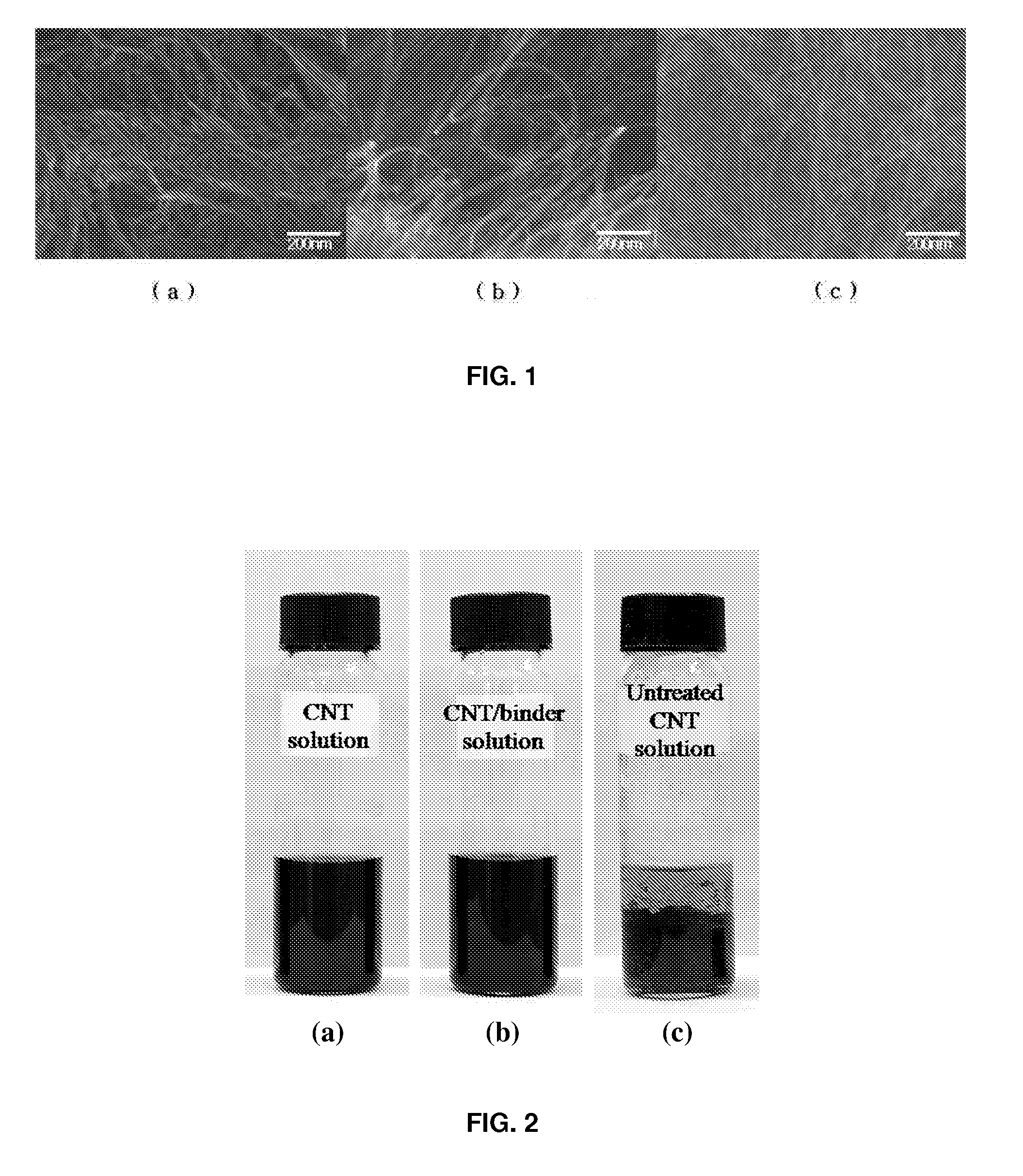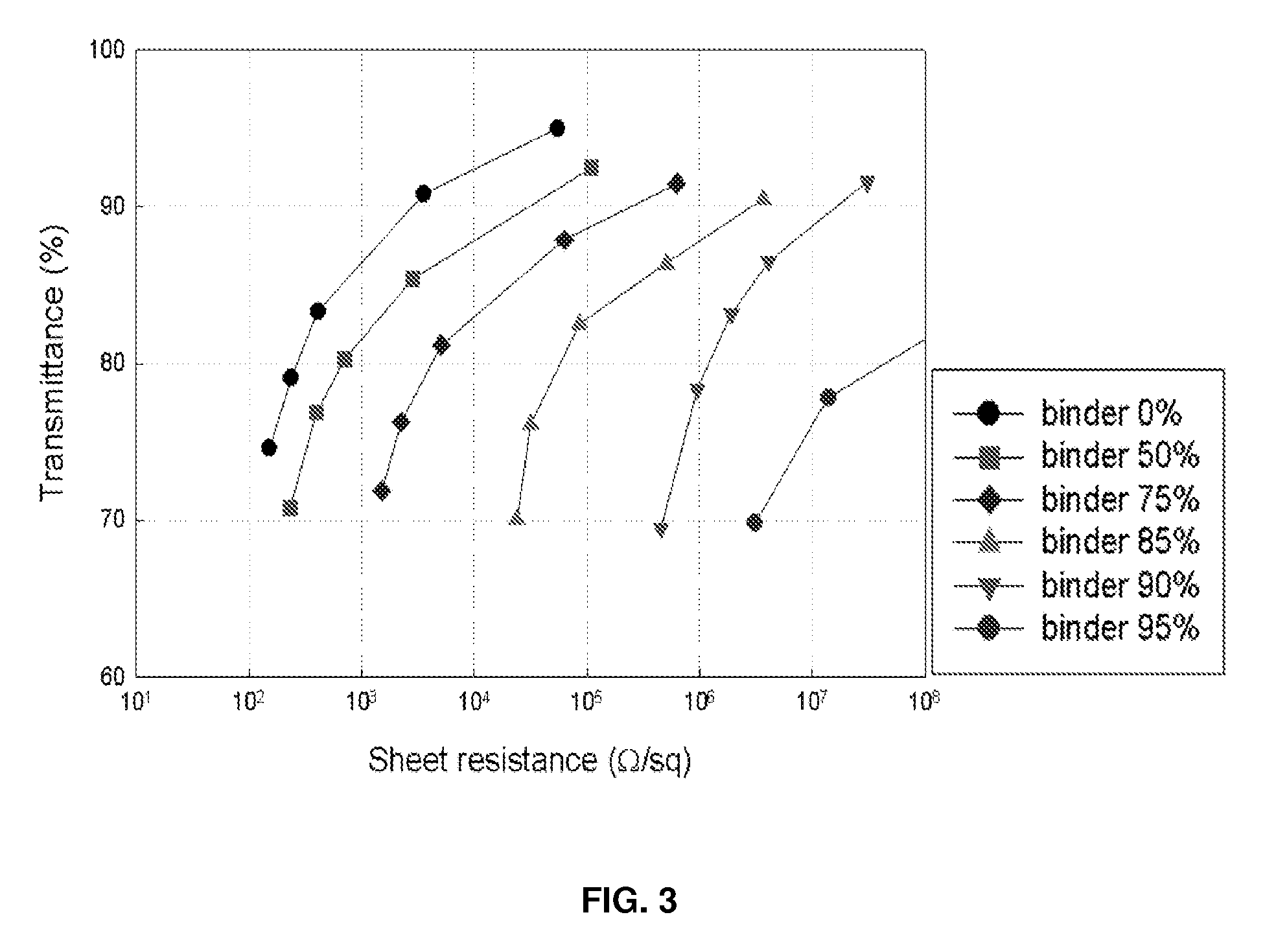Method of Manufacturing Transparent Conductive Film Containing Carbon Nanotubes And Binder, And Transparent Conductive Film Manufactured Thereby
a technology of carbon nanotubes and conductive films, which is applied in the direction of non-conductive materials with dispersed conductive materials, transportation and packaging, coatings, etc., can solve the problems of low electrical conductivity or opaqueness, and inability to meet demand, etc., to achieve efficient dispersion, increase the dispersibility and adhesiveness of substrates, and high electrical conductivity
- Summary
- Abstract
- Description
- Claims
- Application Information
AI Technical Summary
Benefits of technology
Problems solved by technology
Method used
Image
Examples
example 1
[0032]The present example is directed to the preparation of a carbon nanotube (CNT) / binder coating solution in a dispersion state, in which thin-multi-walled carbon nanotubes (thin-MWNTs) and a binder are mixed, and to the manufacture of a transparent conductive film.
[0033]The CNT / binder coating carbon was prepared through the following procedure.
[0034]0.1 g of thin-MWNTs, which are present in an agglomerated state, and 100 ml of 30 vol % nitric acid (HNO3) solution were placed in a 500 ml Erlenmeyer flask, after which the MWNTs were dispersed for 1 hour using a sonicator. As illustrated in FIG. 1, the thin-MWNT used was thin-MWNTs (ILJIN Nanotech, purity: 95 wt %) having an outer diameter of 4˜10 nm and a length of 10˜20 μm.
[0035]The solution thus prepared was refluxed at the boiling point for 1 hour, filtered four or more times using filter paper (pore size: 25 μm) to remove the residual acid solution from the carbon nanotubes, and then dried, thus preparing MWNTs having a substit...
example 2
[0040]The present example is directed to the preparation of a CNT / binder coating solution in a dispersion state, in which double-walled carbon nanotubes (DWNT) and a binder are mixed, and to the manufacture of a transparent conductive film.
[0041]In the case of the DWNTs, acid treatment as in Example 1 was applied, thus preparing chemically treated DWNTs. As seen in FIG. 1B, the DWNT used was DWNTs (CNI, USA, impurity: 5%) having an average outer diameter of 3 nm and a length of 10˜20 μm. A DWNT / binder coating solution was prepared in the same method as in Example 1, and a transparent conductive film was manufactured using the same method.
example 3
[0042]The present example is directed to the preparation of a CNT / binder coating solution in a dispersion state, in which single-walled carbon nanotubes (SWNTs) and a binder are mixed, and to the manufacture of a transparent conductive film.
[0043]In the case of the SWNTs, acid treatment as in Example 1 was applied, thus preparing chemically modified SWNTs. The SWNT used was SWNTs (HiPco tube CNI, impurity: 5%) having an average outer diameter of 1 nm and a length of 20 μm. A SWNT / binder coating solution was prepared in the same method as in Example 1, and a transparent conductive film was manufactured using the same method.
[0044]The transparent conductive films thus manufactured had a difference in sheet resistance on the order of ±20% depending on the type of solvent used, which is based on the difference in the dispersibility of the CNTs in the solvent. As is apparent from Table 1, the transparent conductive film can be seen to exhibit sheet resistance on the order of 100˜300 Ω / sq...
PUM
| Property | Measurement | Unit |
|---|---|---|
| Time | aaaaa | aaaaa |
| Percent by mass | aaaaa | aaaaa |
| Percent by mass | aaaaa | aaaaa |
Abstract
Description
Claims
Application Information
 Login to View More
Login to View More - R&D
- Intellectual Property
- Life Sciences
- Materials
- Tech Scout
- Unparalleled Data Quality
- Higher Quality Content
- 60% Fewer Hallucinations
Browse by: Latest US Patents, China's latest patents, Technical Efficacy Thesaurus, Application Domain, Technology Topic, Popular Technical Reports.
© 2025 PatSnap. All rights reserved.Legal|Privacy policy|Modern Slavery Act Transparency Statement|Sitemap|About US| Contact US: help@patsnap.com



